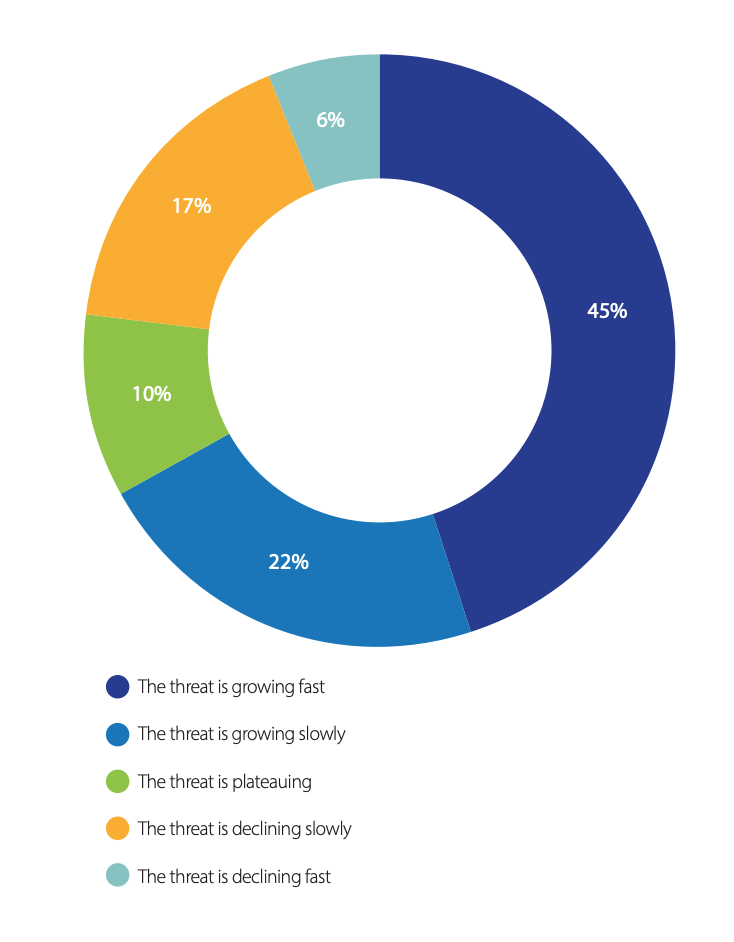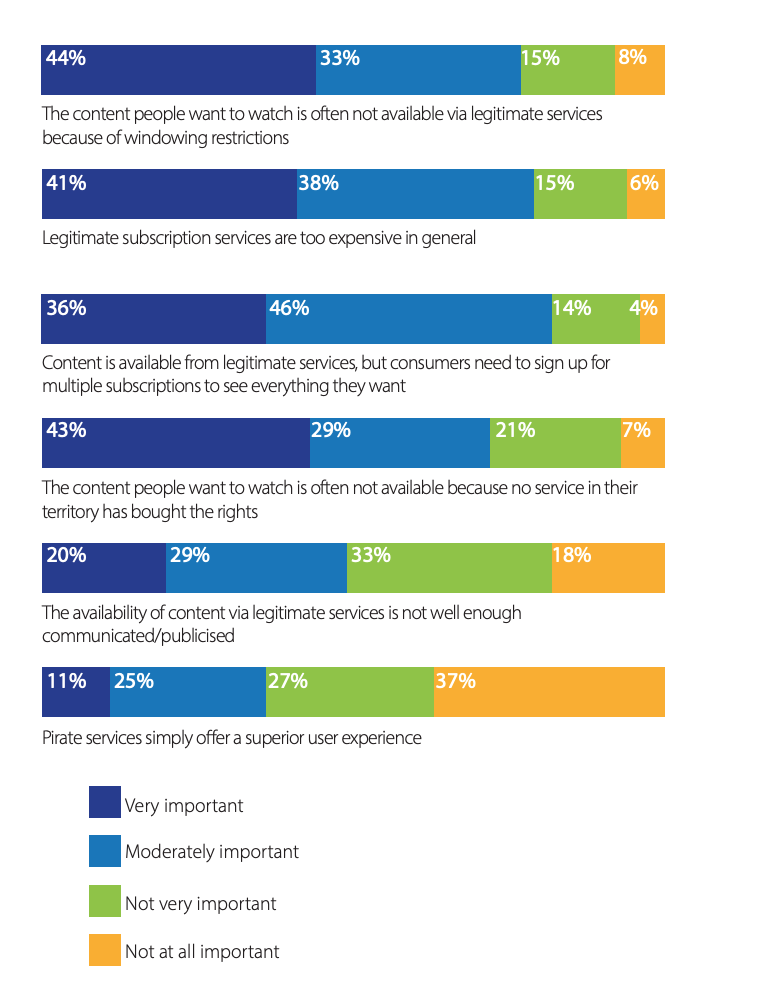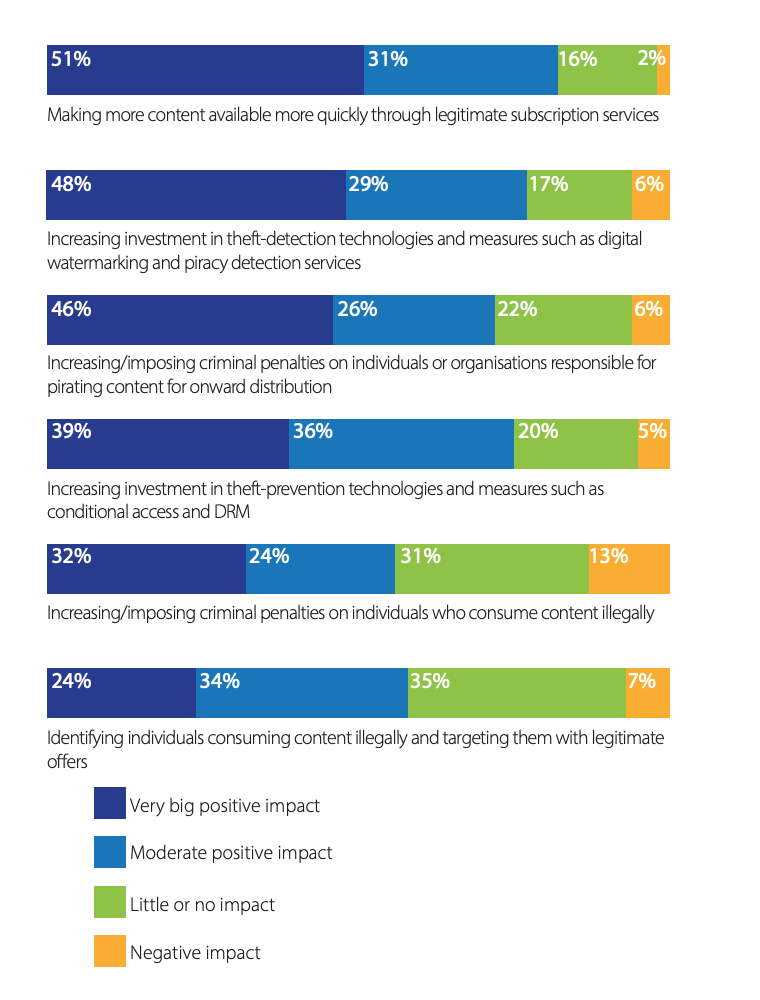Anti-piracy efforts are stepping up, but is it enough?

The world’s biggest pirate streaming service Modbro was shut down this week in a huge win for anti-piracy advocates.
The outfit, which spanned three countries had been downloaded more than 100 million times and generated more than €5 million in profit for its operators – four of whom have been arrested in an operation carried out by the Spanish National Police.
Piracy has always been a significant threat to premium content creators and distributors. In the age of streaming and IP-based services, the threat has been globalised and has become more urgent. The COVID-19 pandemic, as with so much, has accelerated trends that were already evident. Streaming is growing in popularity and content is becoming available online in an earlier window, when it is of highest value. The stakes have never been higher. The fight against piracy is multifaceted, encompassing traditional tools such as encryption alongside theft detection and takedown services and technologies, and ways to incentivise consumers to turn to legitimate sources of entertainment.
As pirates grow more sophisticated, so do companies like Synamedia who work to fight against them. The company offers solutions that promise to eradicate streaming pirates’ businesses while protecting legitimate providers’ revenues with a data-led model that also enables measurement of efficacy and ROI of anti-piracy campaigns.
As a part of the Digital TV Europe Industry Survey 2021, we questioned industry insiders, principally pay TV operators and broadcasters, OTT streaming companies, content creators and aggregators, regulators and technologists, about their views on the nature of the threat, whether and how fast it is growing, and what rights-holders can do to combat it.
A growing threat
Despite ongoing efforts to clampdown on piracy – whether that is in the form of forensic watermarking or increased police actions – there still perception among industry insiders that the threat of piracy is not only not being improved, but that it is increasing significantly.
The COVID-19 pandemic and the accompanying growth in digital distribution and streaming consumption has concentrated minds to some extent in the battle to combat piracy and illicit consumption of video. With studios experimenting in premium VOD in the absence of theatrical distribution for new movies and the launch of multiple new direct-to-consumer initiatives, premium content is more than ever susceptible to being pirated.
And with growth in digital and IP-based distribution, piracy no longer involves someone furtively camcording a poor copy of a new release from inside a cinema, but high-quality versions of new content being distributed over the internet immediately upon release.
Doubtless with all this in mind, 67% of survey respondents believe that the threat of piracy is growing, and two thirds of those believe it is growing fast. Only a minority of around 23% believe that the threat of piracy is declining, with some 10% believing it has plateaued.
The extent to which these fears are justified is open to debate. Statistics about global piracy are hard to verify, given that these are based on surveys about an illegal activity. While it is not immediately clear whether consumption of pirated content has actually increased in a sustained way over the last few years, we can certainly say with some confidence that the opportunity to pirate high-quality versions of premium content has increased.
High Profile incidences of pirating of premium sports content have also increased awareness of the threat.
Why people pirate
We may be in a golden age of TV content, with the flexibility afforded to creators by streaming services creating some of the most compelling and boundary-pushing series in decades – and all the more to pirate.
If the supply of pirated content in an age of all-IP distribution represents a growing threat to rights-holders, the impact of that threat on actual revenues will of course depend on the rate of consumption.
What then are the major reasons why people consume content illicitly?
In the view of survey respondents at least, three stand out. First, that legitimate subscription services are too expensive. Second, the content people want to watch is often not available from legitimate sources and third, where content is available from legitimate services, consumers need to sign up for multiple subscriptions to see everything they want, adding to cost and inconvenience.
A related factor that also plays a significant role, in the view of survey respondents, is that content people want to watch is often not available because no service in their territory has bought the rights.
Two other motivations for consuming pirated content are less compelling, in the view of our survey sample. Respondents are not, on the whole, convinced that piracy is rampant because the availability of the content via legitimate services is not well enough communicated or publicised. They are even less convinced that pirate services simply offer a superior user experience, despite much comment on how sophisticated certain pirate operations have become in imitating legitimate offerings, with registration, online payment mechanisms and search and recommendation features.
How to stop piracy
Attempts to tackle piracy that focus exclusively on the supply side can only succeed temporarily. Where there is demand, there will be pirated content. Reducing demand for illicit content is a multifaceted challenge. We asked survey respondents to rate the merits of various strategies to combat illicit consumption (which could also include targeting the supply).
The strongest approval ratings were given to making more content available more quickly through legitimate subscription services. If consumers can find the content they want quickly, the argument goes, they will not be tempted by illegitimate sources. There is a strong case for arguing that restrictive windowing and exclusive distribution deals incentivise piracy, though of course it elides the problem of price and whether the increasingly fragmented distribution landscape itself is a major problem.
While making more content available sooner can be characterised as offering consumers a carrot, respondents also see value in carrying a stick. Within this category of strategies to combat piracy, respondents particularly saw value in increasing investment in theft-detection technologies and measures such as digital watermarking and piracy detection services. Instructively, these measures, which believe that the threat of 67% piracy is growing are used to detect and take down piracy after it has happened, were rated slightly higher than investment in theft prevention technologies and measures such as conditional access and DRM.
While both sets of anti-piracy tools are essential in the fight against illicit distribution of content, it is probably true to say that there is now more emphasis on anti-piracy detection as an investment priority. This is directly related to the heightened threat of content theft resulting from growth in IP-based digital distribution and early release windows.
The stick also has more direct relevance in disincentivising organised piracy, according to respondents. Increasing penalties on individuals and organisations responsible for pirating content for onward distribution is highly rated.
There is less enthusiasm for imposing criminal penalties on individuals who consume content illegally. On the other side of the stick/carrot equation, there is no more enthusiasm for identifying individuals who consume content illegally and targeting them with legitimate offers. Neither is believed to have more than a marginal impact on the problem.
Can the threat be reduced?
The COVID-19 pandemic has given a strong boost to streaming video consumption, helping to accelerate a trend that was well underway before the virus hit the world. With more and more content being distributed and consumed over IP networks and the open internet, opportunities to pirate and distribute high-quality versions of premium titles and premium live content have never been greater.
Industry insiders believe that the threat of piracy is certainly growing. Among the major incentives for consumers to turn to illicit content are the high cost of legitimate services, the lack of availability of content they want to watch and the fragmentation of the distribution universe. Making content available at a time and place – and at a price point – that consumers value is therefore a big part of the fight against piracy.
Alongside this, as streaming piracy becomes more prevalent, content rights-holders must invest in anti-piracy detection and technologies such as digital watermarking to ensure that they have the tools to combat an ever-evolving threat.
Above all, industry players must pull together and act in concert with peers, regulatory agencies and government. For service providers and content rights-holders, investing in the right solutions to take on piracy is likely to make a difference in how far they are able to combat it.
And though there is a perception that piracy is increasing, industry insiders remain, on balance, optimistic that the threat can be reduced.
This piece is adapted from a section sponsored by Synamedia in the Digital TV Europe Industry Survey 2021. To read the full report for free click here.






